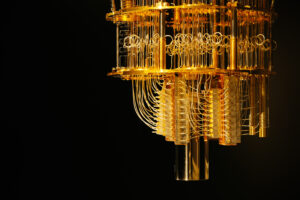Even though silver is known for its use in jewelry, fancy silverware, and coins, it has many other practical functions as well. In this day and age, the main way we use silver is in industrial applications. A few examples of how silver is used include its role in electronic devices, energy production, chemical production, medical practices, and of course, currency. Included below is an overview of the function of silver in each of these categories.
Electronic Devices
Though we tend to think of silver as currency or jewelry, silver’s main function happens to be in electronics. The electrical and thermal conductivity of silver is considered to be far superior than that of other metals. A prominent example of how silver is used in electronics is in the contacts of electrical switches. The silver helps send signals between the two contacts by allowing a current to pass through; whether the contacts are joined or not determines whether the switch is on or off. Electronics ranging from cars to industrial machines to household electronic devices are controlled by contacts that work better with silver than other with other metals.
Energy Sources
Because of silver’s high levels of conductivity, a silver paste can be used in solar panels. When sunlight contacts the conducting silver paste, the reaction produces a current. Silver is also very reflective and is useful in another method of obtaining energy: electricity. Electricity can be generated when silver reflects solar energy into collectors. These collectors use salts to develop electricity.
Chemical Production
A catalyst is a substance that accelerates a chemical reaction, without itself being changed by the reaction. Silver is used in chemical production as a catalyst to speed up the production of the chemicals ethylene oxide and formaldehyde. Ethylene oxide is used to make a plethora of the products we use in our day-to-day lives, such as shaped plastics and polyester. A small portion of ethylene oxide is also important in sterilizing medical tools and healthcare devices, including bandages. Formaldehyde also has many uses in our day-to-day lives. It is used as a preservative in medical vaccines and in cosmetics, in solid plastics, and in resins.
Medicine
Silver is a non-toxic antibiotic commonly used in medical applications. Silver ions can absorb oxygen, which is able to kill bacteria by interfering with their cellular respiration, or their ability to make energy. Silver can help wounds heal, and is even used in some eye drops and toothpastes to stave off infection. Silver is also great for bandages and coating medical equipment.
Currency
Because silver is quite rare, it is also very valuable and is a source of wealth. It is also malleable and can be easily shaped and stamped into any form of coin. Silver melts at a very high temperature, but does not corrode. Silver’s longevity and strength make it an ideal form of currency, as individual coins can endure for centuries. Not surprisingly, it has been used as currency all over the world.
Byline
Gregory Crawford is primarily interested in materials science, mobile phones, the tech industry, gadgets and gadget insurance. Those with mobile phones should be sure to check out the phone insurance brand Protect Your Bubble.
Image credit goes to Bradley Brown1.



 The $100K Skill Nobody Taught You: Prompt Engineering Explained
The $100K Skill Nobody Taught You: Prompt Engineering Explained




